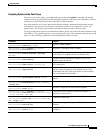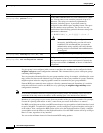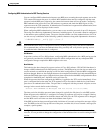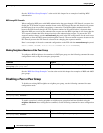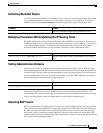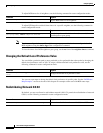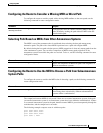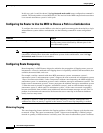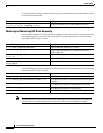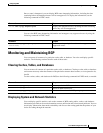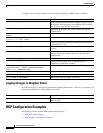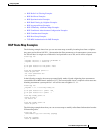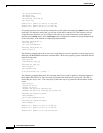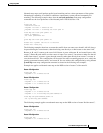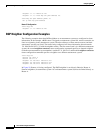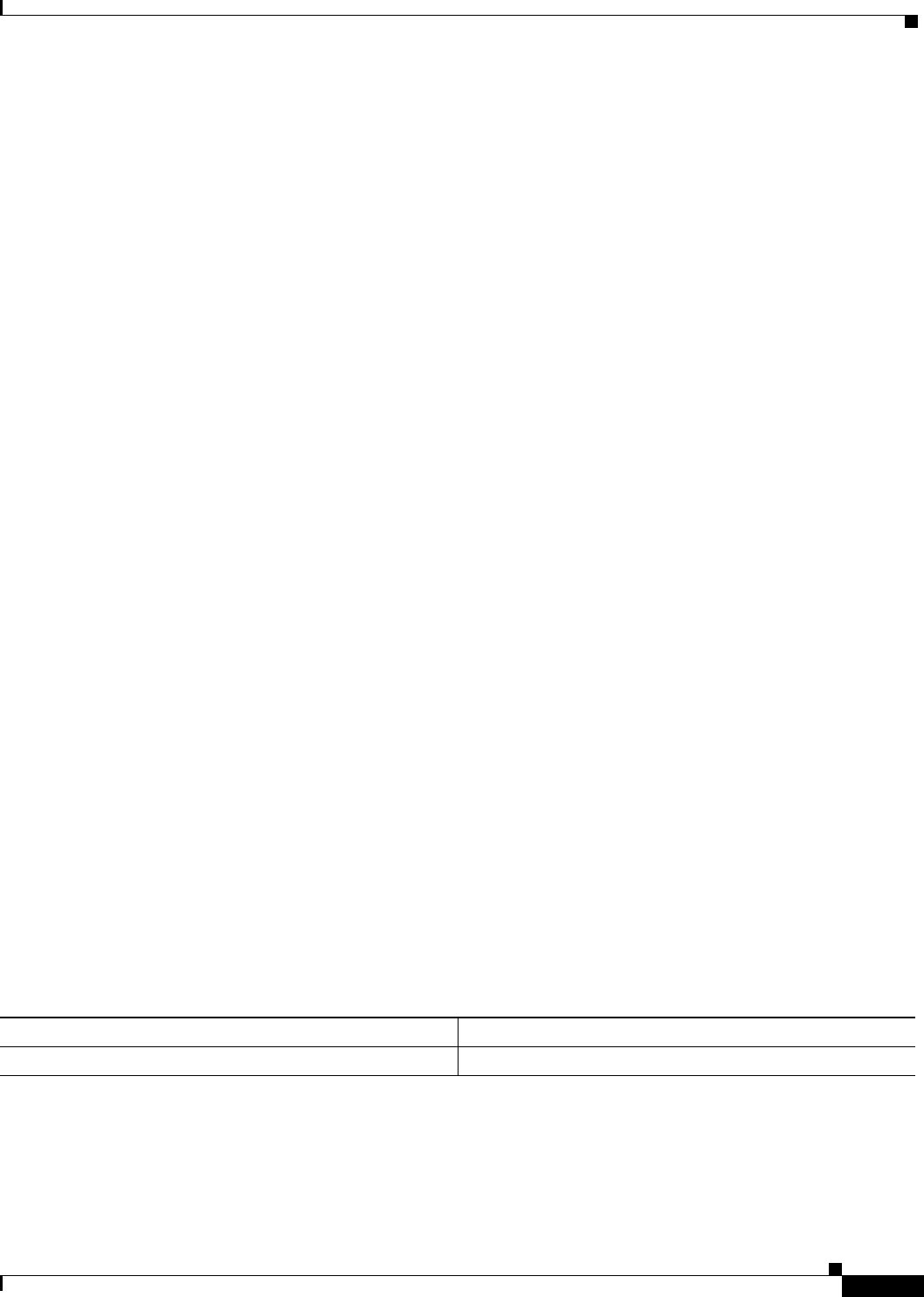
Configuring BGP
Configuring Advanced BGP Features
IPC-329
Cisco IOS IP Configuration Guide
to advertise the status of the route to neighbors. The penalties are cumulative. When the route flaps so
often that the penalty exceeds a configurable suppress limit, the router stops advertising the route to
network A, regardless of how many times it flaps. Thus, the route is dampened.
The penalty placed on network A is decayed until the reuse limit is reached, upon which the route is once
again advertised. At half of the reuse limit, the dampening information for the route to network A is
removed.
Understanding Route Dampening Terms
The following terms are used when describing route dampening:
• Flap—A route is available, then unavailable, or vice versa.
• History state—After a route flaps once, it is assigned a penalty and put into history state, meaning
the router does not have the best path, based on historical information.
• Penalty—Each time a route flaps, the router configured for route dampening in another autonomous
system assigns the route a penalty of 1000. Penalties are cumulative. The penalty for the route is
stored in the BGP routing table until the penalty exceeds the suppress limit. At that point, the route
state changes from history to damp.
• Damp state—In this state, the route has flapped so often that the router will not advertise this route
to BGP neighbors.
• Suppress limit—A route is suppressed when its penalty exceeds this limit. The default value is 2000.
• Half-life—Once the route has been assigned a penalty, the penalty is decreased by half after the
half-life period (which is 15 minutes by default). The process of reducing the penalty happens every
5 seconds.
• Reuse limit—As the penalty for a flapping route decreases and falls below this reuse limit, the route
is unsuppressed. That is, the route is added back to the BGP table and once again used for
forwarding. The default reuse limit is 750. The process of unsuppressing routes occurs at 10-second
increments. Every 10 seconds, the router finds out which routes are now unsuppressed and
advertises them to the world.
• Maximum suppress limit—This value is the maximum amount of time a route can be suppressed.
The default value is four times the half-life.
The routes external to an autonomous system learned via iBGP are not dampened. This policy prevent
the iBGP peers from having a higher penalty for routes external to the autonomous system.
Enabling Route Dampening
To enable BGP route dampening, use the following command in address family or router configuration
mode:
Command Purpose
Router(config)# bgp dampening
Enables BGP route dampening.



